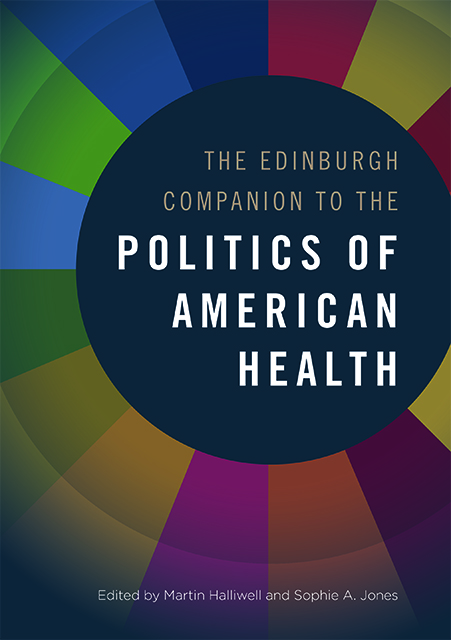Book contents
- Frontmatter
- List of Contents
- Notes on Contributors
- Introduction: The Political Landscapes of American Health, 1945–2020
- I Geography, Community and American Health
- II Critical Health Conditions: Debates and Histories
- III The Politics of Children's Health
- IV The Institutional Matrix of Health Care
- V The White House, Congress and Health Reform
- VI Justice, Ethics and American Health
- VII Public Health and Global Health
- General Bibliography
- Index
27 - Genetics, Health and the Making of America's Triracial Isolates, 1950–80
Published online by Cambridge University Press: 12 August 2023
- Frontmatter
- List of Contents
- Notes on Contributors
- Introduction: The Political Landscapes of American Health, 1945–2020
- I Geography, Community and American Health
- II Critical Health Conditions: Debates and Histories
- III The Politics of Children's Health
- IV The Institutional Matrix of Health Care
- V The White House, Congress and Health Reform
- VI Justice, Ethics and American Health
- VII Public Health and Global Health
- General Bibliography
- Index
Summary
In 1973 the Lumbee Indians of North Carolina found themselves embroiled in a political maelstrom. Newspapers around the state were beginning to report that the Lumbee had ‘more Negro and white ancestry than Indian’, at least according to the noted physical anthropologist William Pollitzer, who had just released a serological study estimating the group's racial composition. This news was devastating for the Lumbee, who were in the process of petitioning the US government for recognition as a Native American tribe, a decree which would have opened up access to public health, as well as educational and employment benefits for the community of 24,000 living in and around Robeson County, North Carolina.
A Native community with noted black and white ancestry, the Lumbee were no doubt accustomed to scepticism regarding their identity. They had been subject to various studies throughout their eighty-five-year quest for tribal recognition, though previous investigations were typically at the request of the Department of Interior or another federal agency tasked with adjudicating the Lumbee's identity claims. Yet Pollitzer's study was different. Rather than reveal the true intentions of his study, he told participants they were part of a health study which would allow them to receive medical attention and learn more about the diseases affecting the population.
The Lumbee are one of the more than three hundred communities that scientists have labelled ‘triracial isolates’. Coined by demographer Calvin Beale in 1957, the term ‘triracial isolates’ denotes communities of black, white and Native ancestry who lived in geographic and reproductive isolation in the eastern United States. While Beale is not the first to offer a collective name for these populations – they have been known as ‘little races’, ‘racial islands’, and even ‘in-between people’ – his term gained the widest purchase amongst researchers during the 1960s and 1970s, and is still used today. As communities of tripartite racial ancestry who also suffered from a host of genetic anomalies, Pollitzer viewed the isolates as an opportunity to test the relationship between the racial dispersion of the ABO blood groups and genetic disease. In practice, however, Pollitzer's investigations and findings, completed largely without the groups’ understanding his true intentions, were released at a moment when several communities were seeking public acceptance as Native Americans. As a result, Pollitzer's studies greatly complicated the identity formation of Native groups with mixed racial heritage.
- Type
- Chapter
- Information
- The Edinburgh Companion to the Politics of American Health , pp. 459 - 475Publisher: Edinburgh University PressPrint publication year: 2022



